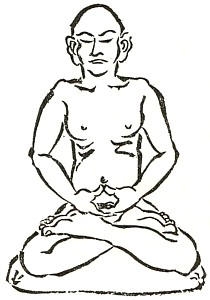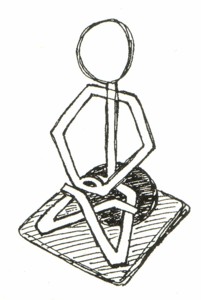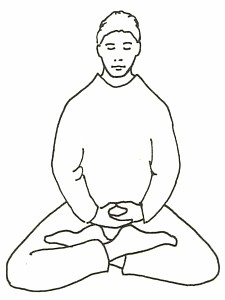|
|---|
How to sit - Part 15 (Adult practice XXXV) |
 Original edition of Sawaki's "Zendan" |
 1st edition of Uchiyama's "Opening the hand of thought" |
 New edition of Uchiyama's "Opening the hand of thought" |
Exactly one year has passed since I wrote about how to sit in zazen for the last time in this "adult practice" corner. Although we have now finally come to the actual posture of sitting, I stopped writing about the topic for a long while. The reason is simply that I was busy with a lot of things, but that is not to say that I had more important things to do than to write about such trivial matters as how to sit cross-legged in zazen. No, it is the other way around. I think that the matter is too important to be handled with in a light and superficial way, so I wanted to take my time to write about it. Unfortunately, I can not say that now I have finally found the leisure to write and explain everything as detailed as I wish I could. Also, as you can imagine, it is almost impossible to write about the act of sitting without some kind of live demonstration in the first place. Anyway, I feel that I do not continue with "adult practice" now, I will probably never do. So I will just go on where I stopped last spring. Last april I wrote about the first part of the section called "starting with zazen", in which Sawaki Roshi talked about bowing in gassho. The section continues like this (translated from the Japanese original): The physical posture
What is important here is that the round cushion called zafu is only used to support the buttocks, thus faciliating the bending forward of the pelvis. The zafu is not used to support the legs. The kness are resting on the square mat called zaniku (or in places like Eiheiji or Zuioji, where no zaniku is used, directly on the tatami). Thus the trunk is supported by the triangle that is formed by both knees and the bottom of the spine. In Rinzai Zen, where no zafu is used, the long rectangular sitting mat that also serves as a futon and zaniku is folded at the end to support the bottocks. Many training monks seem to be ignorant of this fact though and sit without bending their pelvis forward, as the lack the support under their spine (the same is true of many Southern Buddhist traditions). The translation of the following section is from the English book "shikantaza": Crossing your legs Kekkafuza (Full-lotus position) Hankafuza (Half-lotus position) In the original Japanese text of "Zendan", it is even said that it is alright to switch the order of the legs in the midst of zazen if they start to hurt, or to switch from kekkafuza to hankafuza or the other way around. Those kind remarks are quite a change of tone compared to the militaristic instruction that we encountered in the issue of "adult practice" of February 2005:
At Antaiji, I usually do not recommend that people switch their legs during zazen, but rather I ask them to sit with the determination to die on the cushion (but few have actually done so until now). These questions might seem trivial to some. But if you spent 1800 hours a year in zazen, in either hankafuza or kekkafuza, the exact way of crossing the legs is nothing less than trivial. It becomes a vital point of practice. Therefore I would like to continue to invest these points further next time.
(to be continued ... Docho)
|
|---|
